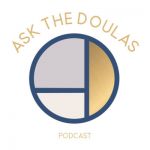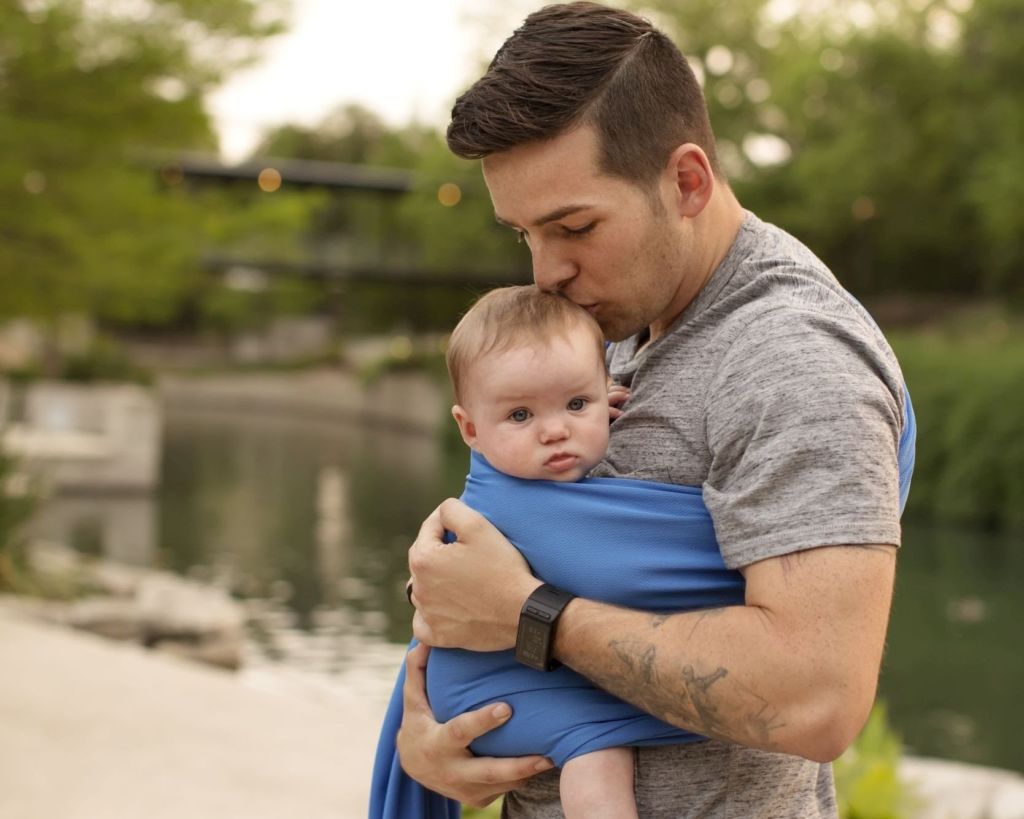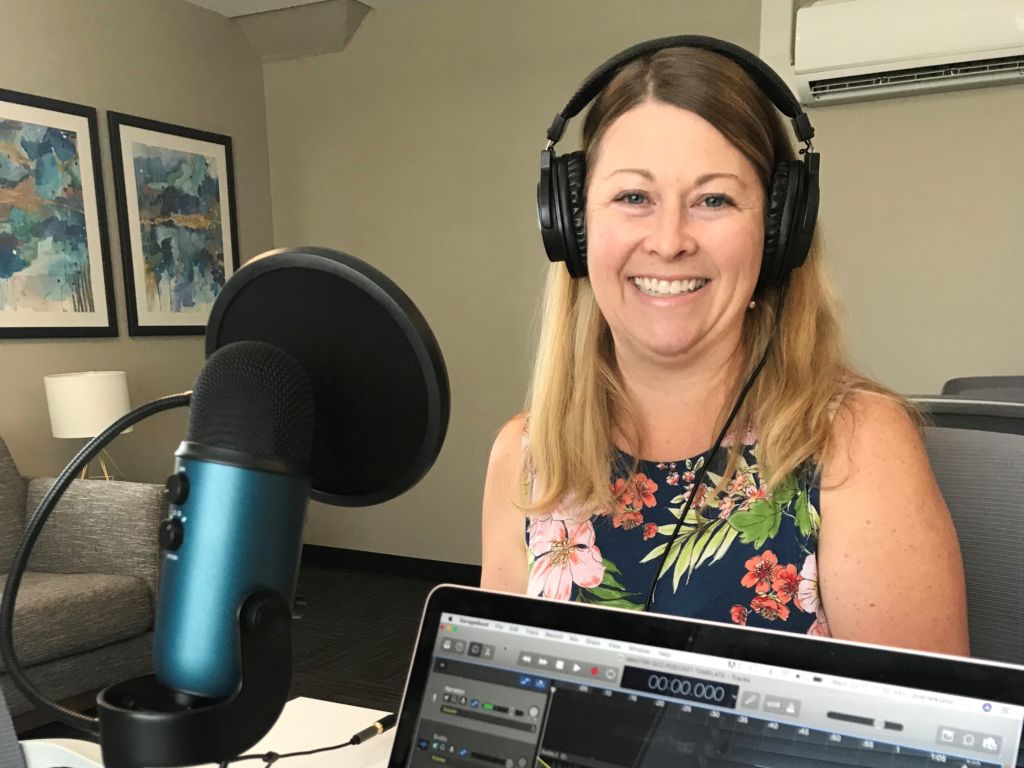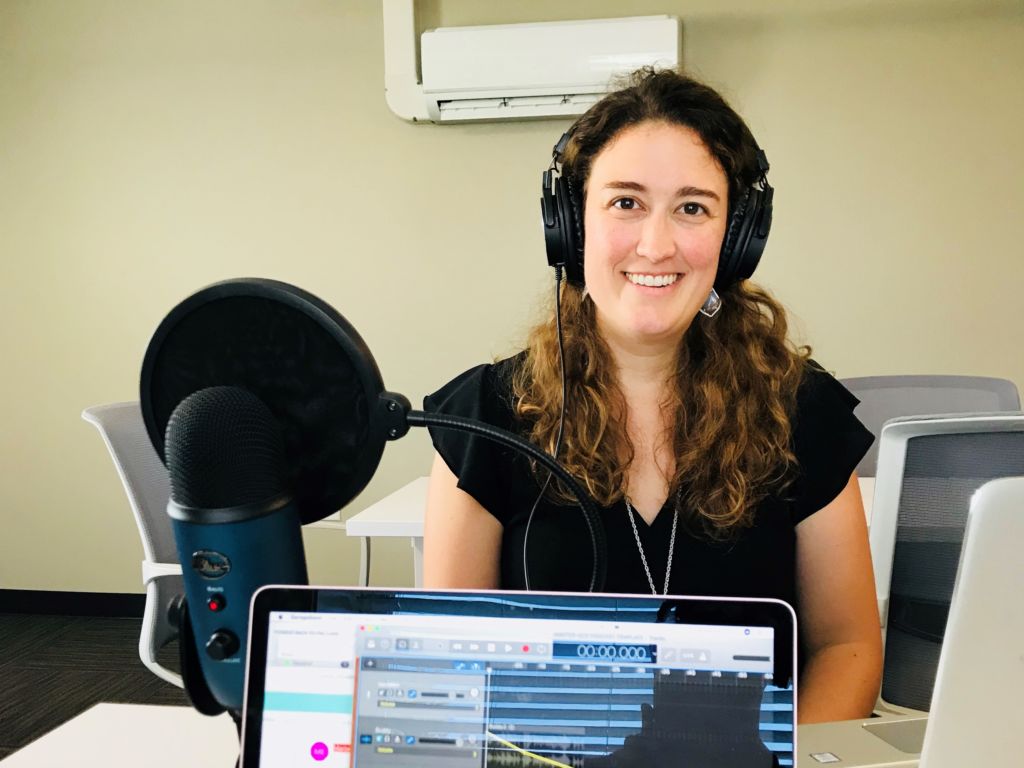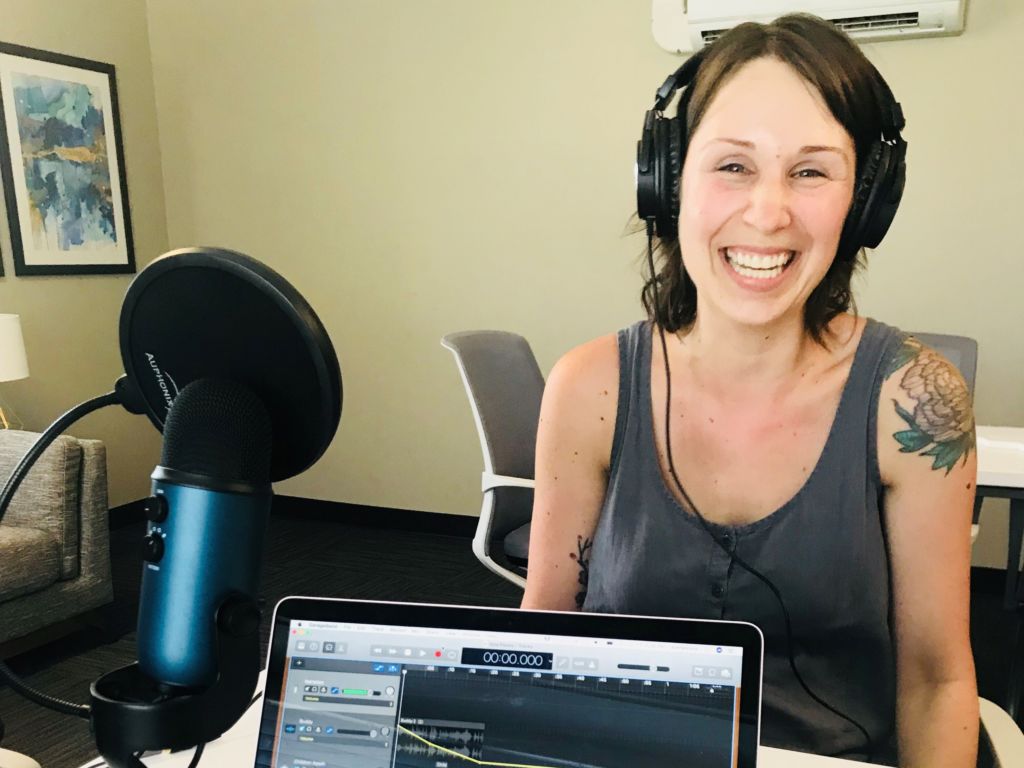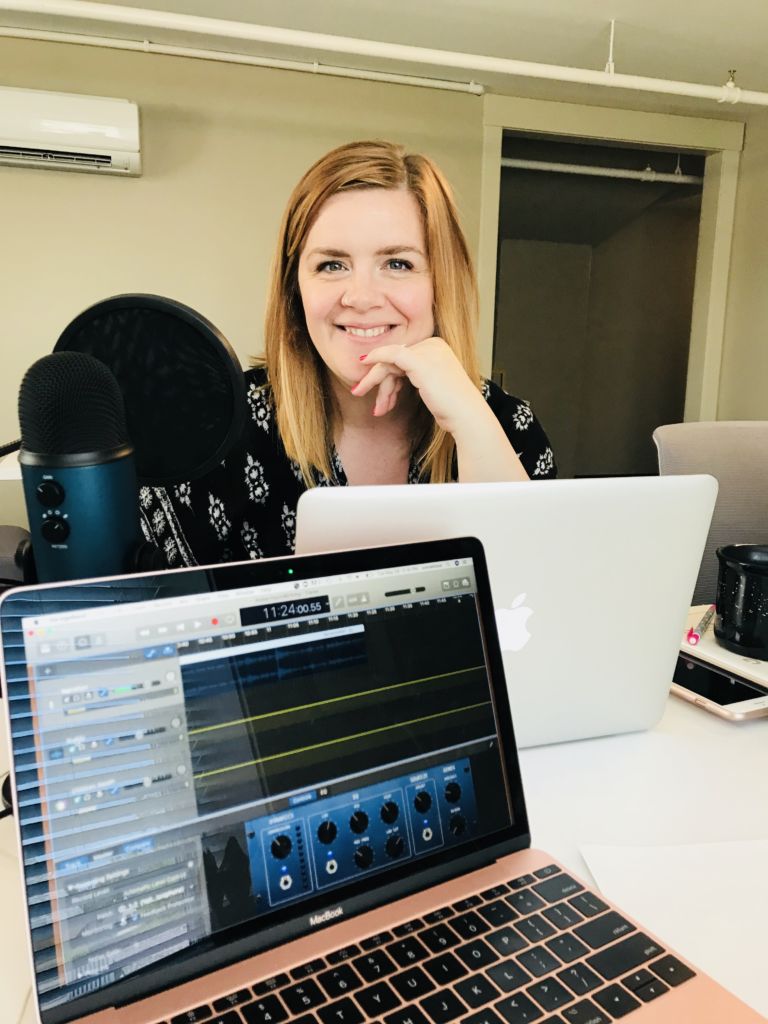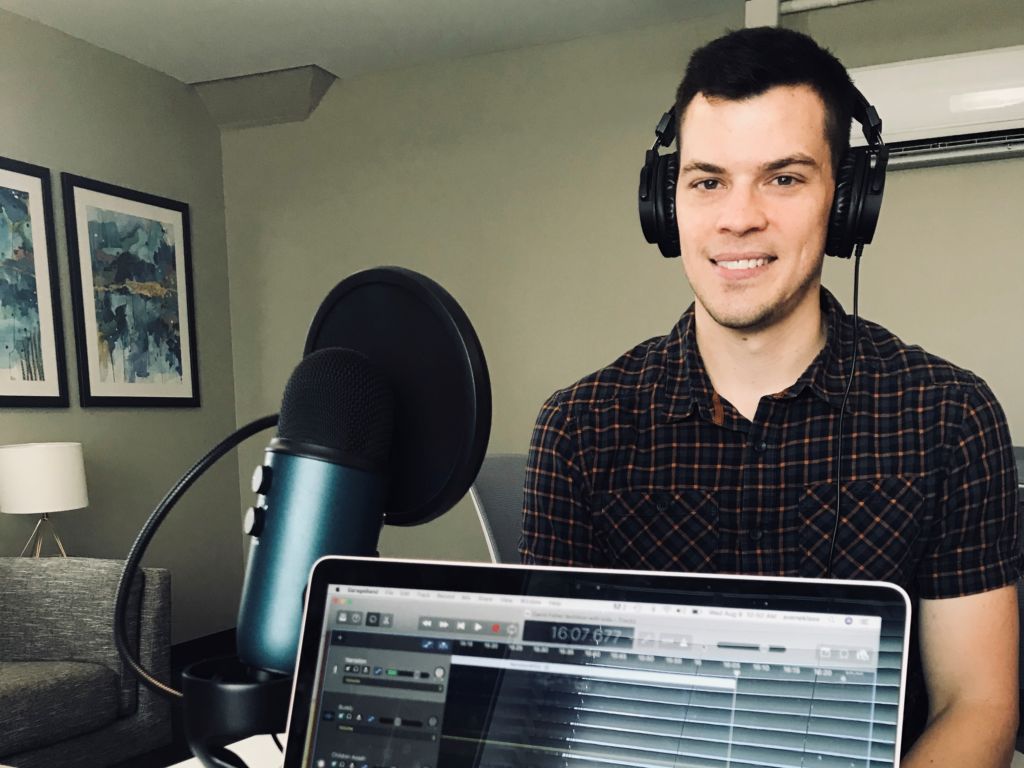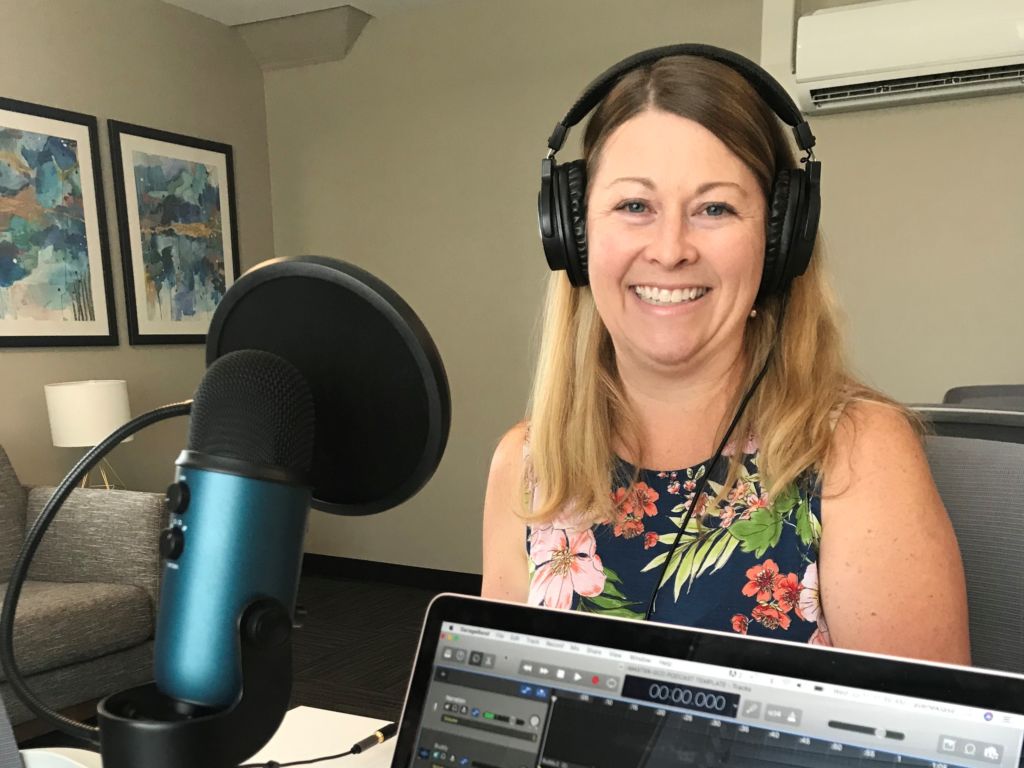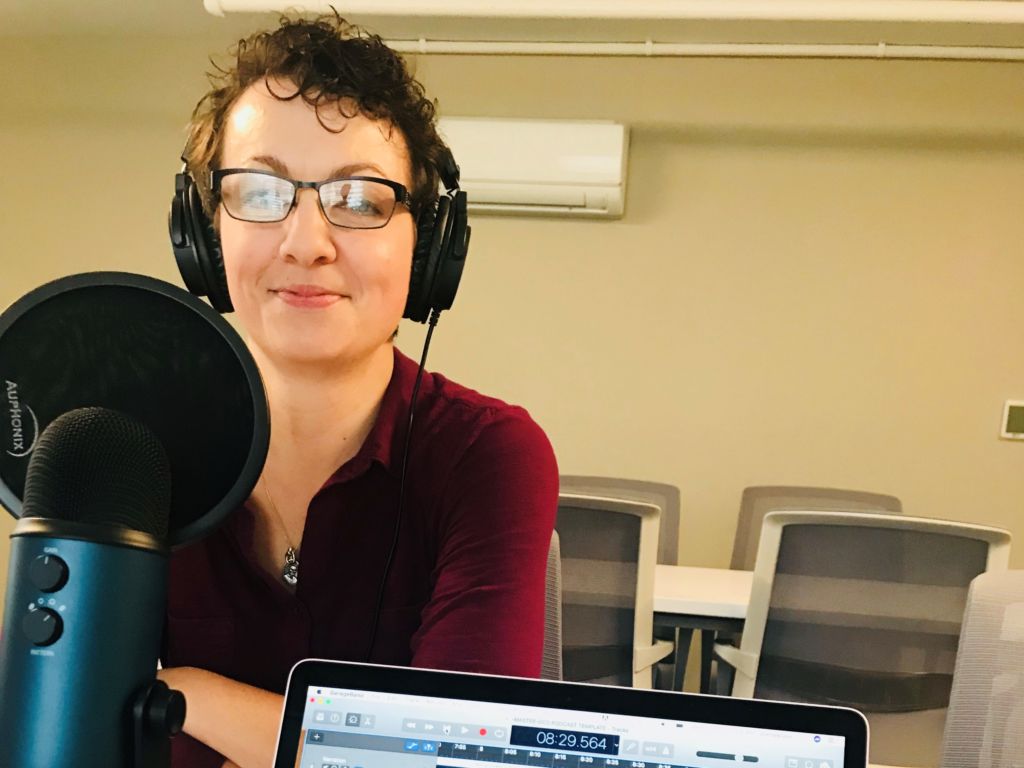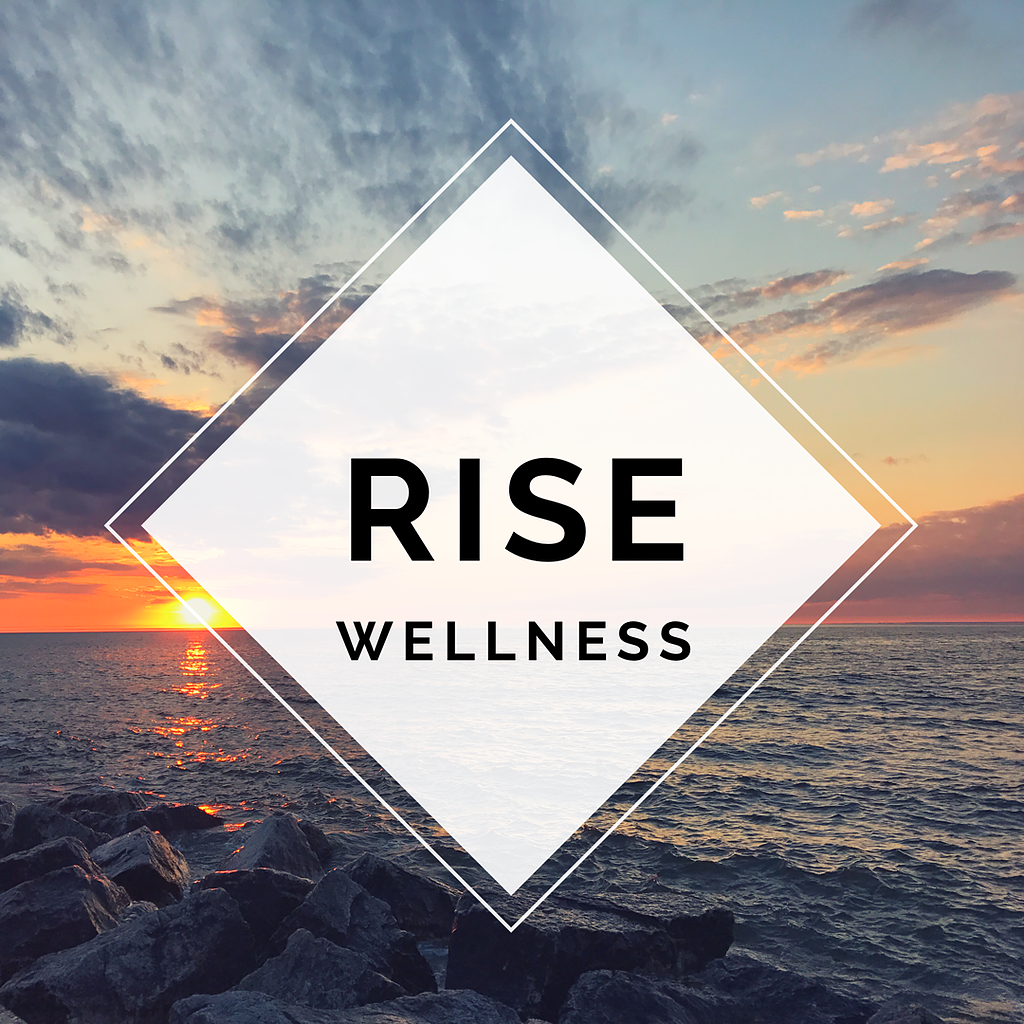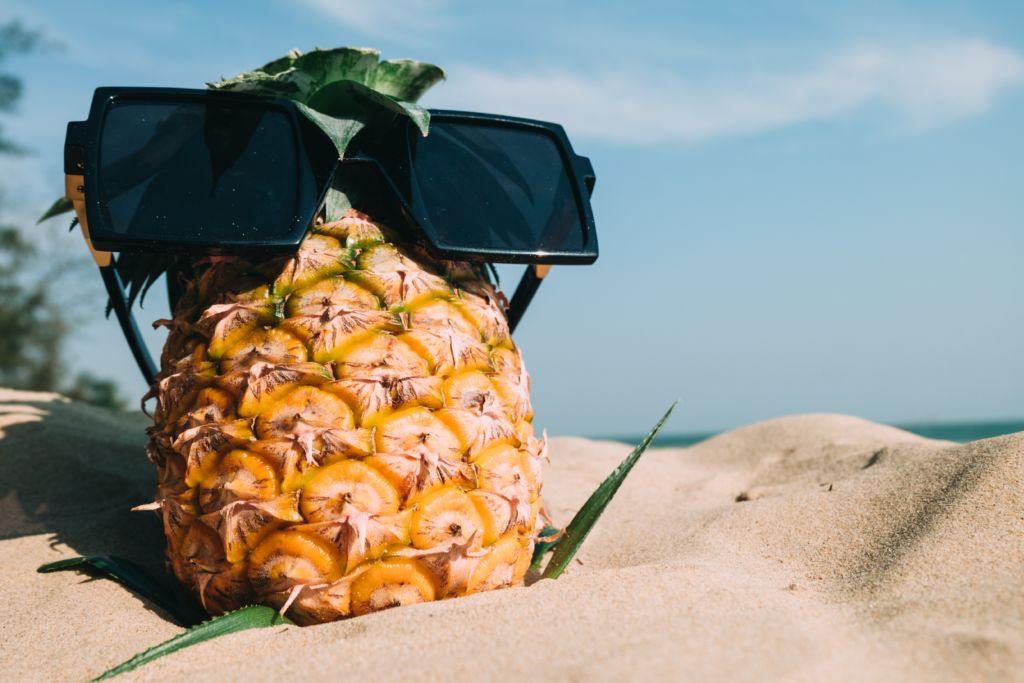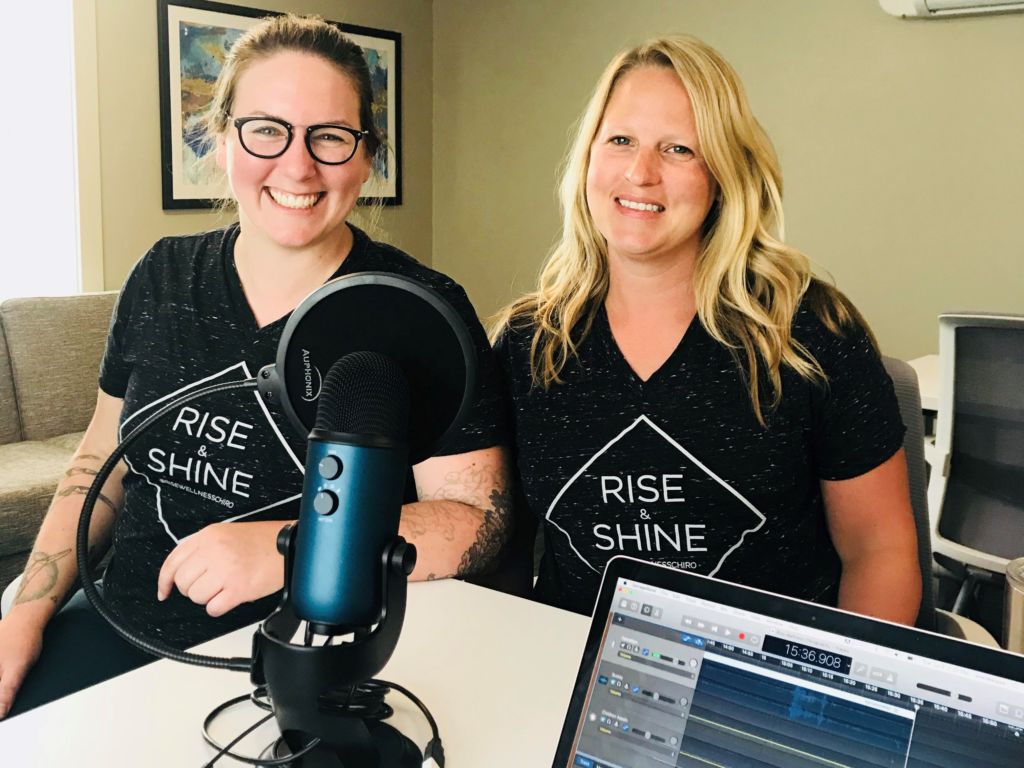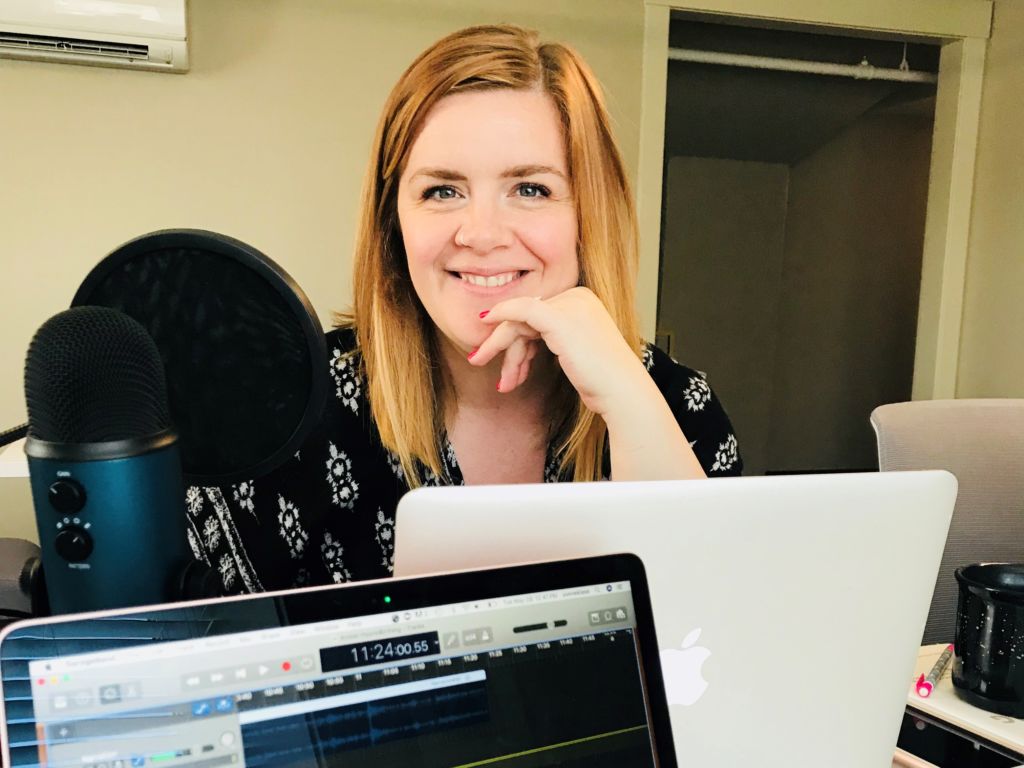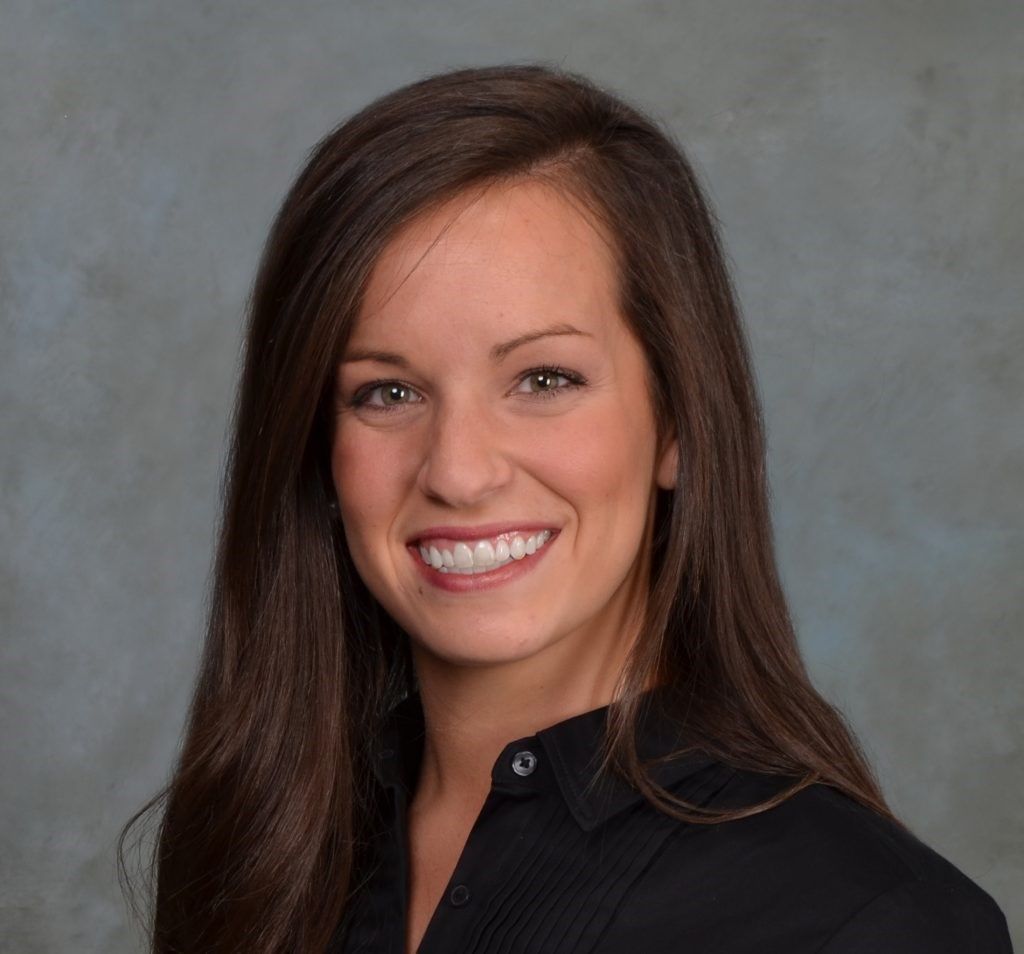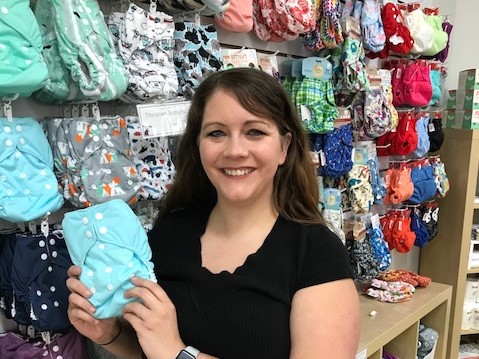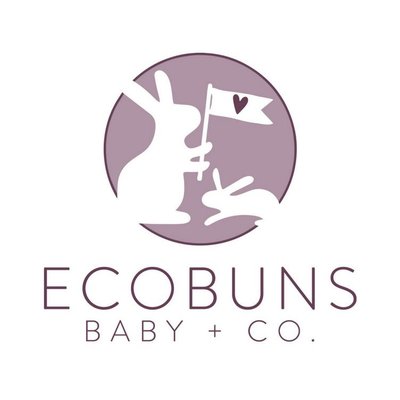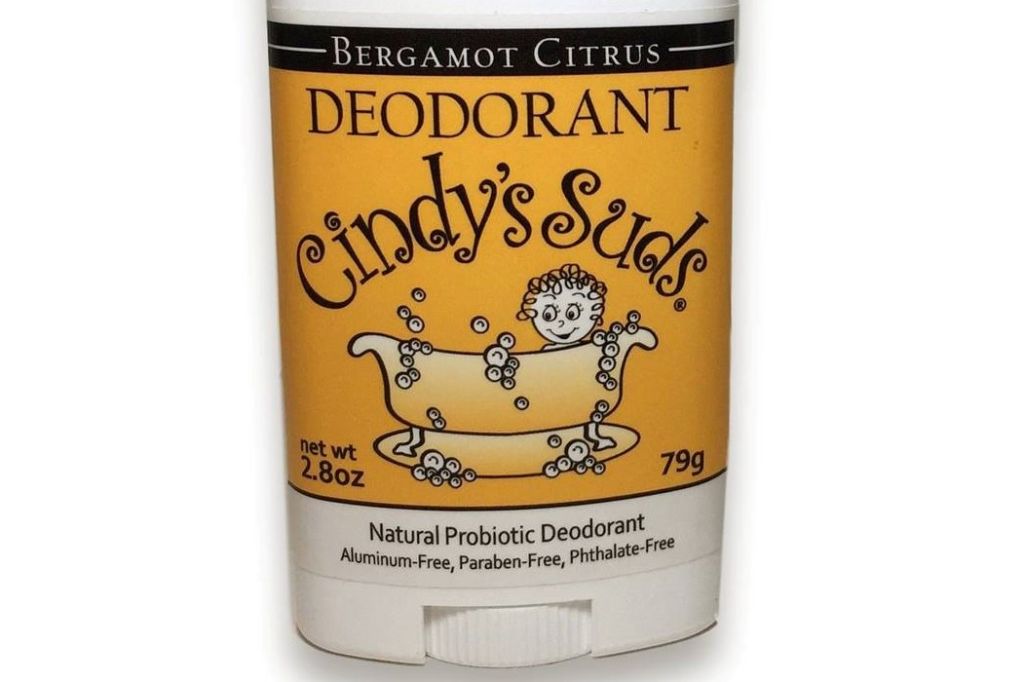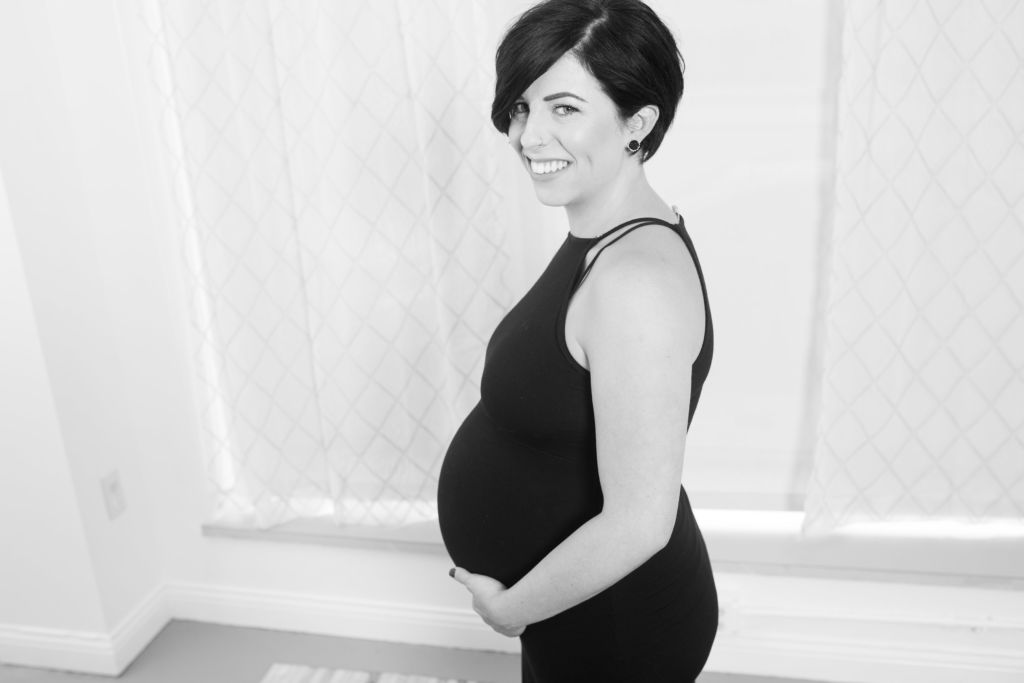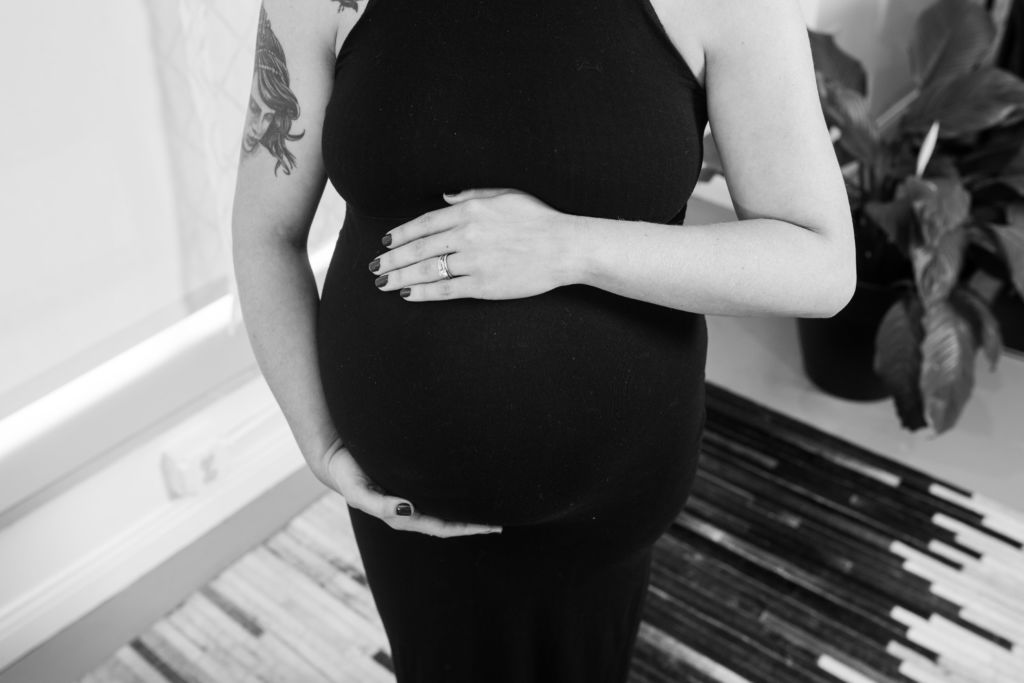What should your birth team look like? What kinds of questions do you need to ask and who should you be talking to when you find out you’re pregnant? We answer these questions and more on today’s podcast with Rise Wellness Chiropractic. You can listen to this complete podcast episode on iTunes or SoundCloud.
Alyssa: Hello, again. Welcome to another episode of Ask the Doulas. I am Alyssa, your host, and I’m talking with Dr. Annie and Dr. Rachel again of Rise Wellness. So we had the idea of talking about building a birth team and what that might look like for new parents as they start this journey because there are obviously a lot of options. And we can talk about doulas and we can talk about chiropractic care, but we can also ask you, Dr. Rachel, as a fairly recent mom. Your twins are how old now?
Dr. Rachel: Ten months today.
Alyssa: Ten months. So you’ve fairly recently went through this whole process of, like, who do I need to talk to? What does my birth plan look like? What was the first thing when you found out you were pregnant? Like, I need to call – who? Your OB? Your husband?
Dr. Rachel: I need to tell my husband! Yeah, my OB. That’s who I called first, probably.
Alyssa: So did you have an OB already that you liked?
Dr. Rachel: Yeah, my gyno, yeah. I liked her.
Alyssa: And she’s also an OB?
Dr. Rachel: Yes. There was the thought of, do I want to go this route?
Alyssa: Is she the right one?
Dr. Rachel: Yes, is she the right one? I met with a midwife. Yeah, so I guess I did do all that.
Alyssa: For birth clients, their providers don’t often change, but I think once you wrap your head around this plan of what you see as ideal, you might realize that your current healthcare team might not be the right team to achieve those goals, and we have to tell people that it’s okay. They’re working for you; you can interview around and pick a new one. Why not?
Dr. Annie: Ultimately, you want to figure out what your ideal birth looks like and what that team looks like that’s going to support you through that process.
Dr. Rachel: Yeah, and encourage you, and not question you on everything you want to do right. I feel like I didn’t get that a lot from my OB, but I know a lot of our patients do. I feel I didn’t get it because I was a chiropractor. She kind of left me alone.
Alyssa: So do you think that meant she knew you already did your research?
Dr. Rachel: Yes.
Alyssa: You’re an educated mom.
Dr. Rachel: Yes.
Alyssa: So they’re assuming these other moms are not?
Dr. Rachel: Yes, because I have friends that also had her, and they would get a lot of pushback.
Alyssa: Like got the third degree? Interesting. I wouldn’t ever think about it that way because I think a lot of our moms do get that pushback, but I think being educated in the biggest part of that, right? If you know your stuff, if they can say, well, why do you want that? If they do give you pushback, then you say, well, because –
Dr. Rachel: I’m sure there’s some moms out there way more educated than I am or planning to be a mom and really have thought about it more than I did.
Dr. Annie: I think that’s where an organized birth plan comes in, too, and having support and people that support you like doulas helps you with that pushback, if you do get pushback from your OB or from your midwife or whoever; your family.
Alyssa: It can come from all directions.
Dr. Rachel: I mean, the first thing I did – well, I knew you, so I talked to you and met with Ashley and Kristin, and I was like, cool. You guys have this handled. I don’t have to worry about anything anymore. You’re going to get me through all of it. I am no longer worried; you know how to get me through labor; you know how to do everything. So I highly recommend doulas.
Alyssa: Doulas will help with it, but they won’t write your birth plan – did you have a birth plan?
Dr. Rachel: Yes, I did. I took your hypnobirthing class. So that’s another thing; you should decide what kind of birthing class you want to take. I would also highly recommend that. It was awesome.
Alyssa: Which helps with that whole education piece, that you’ve done your homework and taken childbirth classes.
Dr. Rachel: And with hypnobirthing, they kind of help you with a birth plan of what you want. Ashley goes through that with you.
Alyssa: And they don’t do it for you, but they will explain some things and answer questions and ultimately, you know, we want, and doulas in general, at least at Gold Coast, want you to be informed and educated to make your own decisions. Parents will call us and say, well, I want you to advocate for me, and that’s not what we do. We will empower you to advocate for yourself because you’re educated and have fact-based resources that you were given to make those decisions. But we don’t sit there and tell people what to do on your behalf.
Dr. Rachel: No, and I think what happens, and what even happened to me, is you get there and they really – you can have a birth wherever; home birth, hospital birth. I ended up having a hospital birth, but they scare you into doing what they want to do, so it’s really important to be educated but also have people that are there supporting you and empowering you that no, you know the right decision and what’s best for you. So stand up for yourself while you’re there. And it’s hard to do.
Alyssa: Right. And that too; are you’re going to have a hospital birth? Are you going to have a home birth? Are you going to call the one birth center in Grand Rapids?
Dr. Rachel: Are you going to do a water birth?
Alyssa: Yeah, and even if it’s a hospital birth, are you interested in the natural birthing suites that are available? Are you limited to a hospital based on your insurance? Finding out all these things and going from there.
Dr. Rachel: Do you want an epidural? Do you not want an epidural?
Dr. Annie: Do you want a midwife or an OB? That’s another big question. A lot of people are uncomfortable with midwives because they don’t think they’re as trained or they’re scared that something might go wrong during the birth, so I hear that a lot from people who are interested in home births and want to have a midwife and want to do the crunchy natural thing, but are like, what if something does go wrong? And I think one of the biggest things that most midwives would tell you is that they’re so trained to recognize flags before they’re even red flags that if, for some reason, anything would go wrong, so many of them are so experienced, and they know exactly how to handle that situation.
Dr. Rachel: But also, “going wrong” is so different in a midwife home birth.
Dr. Annie: That’s true.
Dr. Rachel: Compared to in the hospital. You know, “going wrong” in the hospital is anything.
Dr. Annie: Oh, levels of intervention?
Dr. Rachel: Yeah, where you have to think, this is just natural. Your body is doing what it needs to do at home, so it’s just…
Dr. Annie: Midwives come from more of the philosophy of supporting the woman rather than taking control of the birth, too. There’s this great quote by Ina May Gaston that I wrote down. “Most women need encouragement more than they need drugs,” and I think that’s true throughout their pregnancy. That’s true throughout the birth process, and really, that’s true for most people throughout their lives.
Alyssa: Yeah, I was going to say even postpartum and beyond, right? Just tell me I’m doing a great job and then maybe I won’t be so down on myself, you know? Those little things, little pieces of encouragement from family and friends.
Dr. Annie: Trusting the natural process and knowing that your body is capable of doing what it’s supposed to do, what it’s designed to do.
Alyssa: Well, and the beauty of this, too, is that there’s so many midwives that work in hospitals. So you can get the best of both worlds.
Dr. Rachel: Yeah, if you are scared of something going wrong.
Alyssa: Yeah, and a lot of times, it’s the partner who might be a little scared. You know, Mom might say she wants a water birth at home, and Dad says heck, no. No way; that’s not safe; blah blah blah. Well, how about a midwife in a hospital? Maybe the natural birthing suites? And as long as you’re low risk, it’s a pretty beautiful option.
Dr. Rachel: Let me just tell you, those hospital beds are uncomfortable. I cannot believe they are putting pregnant women in those. So I would totally opt for – if I didn’t have a twin pregnancy and all these things, I would have wanted it done at home, too. I would have done the natural birthing suite at Spectrum. Don’t you get a normal bed there?
Alyssa: It’s a king-size bed, I believe.
Dr. Rachel: It’s better than what I have at home.
Alyssa: I mean, you don’t get to stay there after delivery. You walk in there and you go wow, this is amazing. If you could stay there for two days… it’s literally like a beautiful hotel room. But unfortunately, they have to move you for the next lady coming in.
Dr. Rachel: You can just – even to lay in that bed, gosh.
Alyssa: We’ve had a few couples who have delivered in there, and it’s just kind of happened where Dad was sitting against the back of the bed and Mom was kind of between his legs, so he got to support her and talk into her ear, which is kind of a nice thing you can do in that sort of environment that you can’t in others. So what else was in your process when you found out you got pregnant? You found your OB first.
Dr. Rachel: I found my OB.
Alyssa: You obviously knew a chiropractor…
Dr. Rachel: I knew a chiropractor. Check! Yeah, met with you guys. Just taking classes, like I said. I’m a chiropractor; I can adjust someone and educate them on what they should do and support them. I know how to do all that, but I never had a baby before. So yeah, I took your lactation class. I took the hypnobirthing class. I tried to do whatever I could. I read books. I would say find a lactation consultant, one that you like. I would do that beforehand, also. I would take that class and I would find one you trust because you think you’re going to have these babies and they’re just going to breastfeeding, and that shit is hard. And the people that just show up in your hospital room aren’t the nicest, I’ll be honest.
Alyssa: Yeah, they have a lot of people to go see.
Dr. Rachel: Yeah, so find someone you like beforehand. I would definitely put that on there.
Alyssa: Well, and like you said, if you take the breastfeeding class with our lactation consultant, Shira, you kind of already know her, and then to have her come to your home for a consult, you know, the day you get home…
Dr. Rachel: You feel comfortable; you don’t feel judged.
Alyssa: You know her; she spends two hours with you alone, and not, hey, I’m here for 15 minutes until I get to the next patient.
Dr. Rachel: Yes, I would recommend that also.
Alyssa: What other parts about the birth plan that you created in hypnobirthing? What else would be important for people to know?
Dr. Rachel: For new parents to educate themselves on? Deciding if they want interventions; do they want an epidural? Do they want to hydrate themselves? Do they want to be on an IV? These are things I don’t even think, if you have a hospital birth, that you realize you have a choice about. Like, no, I’m going to hydrate myself; I don’t want to be hooked up to an IV; I want to be able to walk around. I would say do the hospital tour, also, so you feel a little bit more comfortable about where you’re going. They have lots of options for you while birthing. But if they hook you up all of a sudden, you can’t do anything.
Alyssa: Right, unless there’s something that calls for it, right? Like if you really need it.
Dr. Rachel: Yeah, if you have to. That’s also when you ask questions. Like, that was a big thing about HypnoBirthing; they teach you, am I okay? Is Baby okay? And if we’re okay, do we really have to do this right now? And then what do you want for Baby once Baby’s born? Do you not want them to clamp the cord right away? Do you want to do the vitamin K? Do you want the hepatitis B? Do you want the drops in the eye? There’s all these things. And they ask you. They do ask you. I was surprised I was asked. Even though I had a birth plan, they’re still like, do you want this?
Alyssa: Yeah, and for new parents who don’t even know what this stuff is, again, you research it. You figure it out.
Dr. Rachel: Yeah, you figure out what’s best for you.
Alyssa: And as doulas, and I’m sure as chiropractors, too, you don’t judge them based on the decisions they’re making as parents. You work with them where they are and figure out the best solution for them at this time. What about chiropractic care? So you find out you’re pregnant; does chiropractic care change for you? You have Dr. Annie working on you because you can’t work on yourself. So does that change or does a mom who doesn’t see a chiropractor – what would she need to know? Like, okay, now I’m pregnant; I need to do this?
Dr. Annie: I think for somebody who’s been under chiropractic care, what happens as your body’s changing and as your baby’s growing, we focus more on pelvic alignment and making sure that everything is in the right spot; making sure all the bones are moving together the way they’re supposed to and making sure that the joints are really not super mobile, but we want them to be able to move the way that they’re supposed to for the birth process. So it helps remove that tension in the pelvis; helps the nervous system communicate the way it’s supposed to because your brain needs to tell all your reproductive organs what to do. And it removes tension on the uterine ligaments, too. So a lot of women with babies that maybe aren’t in the right presentation, like if the baby is breech or posterior, sometimes that’s caused from intrauterine constraint, and so there’s specialized chiropractic techniques, like Webster technique which we’re certified in, to help with the ligament tension so that the uterus can balance within the pelvis and then the baby can get into the right position that it’s supposed to be in.
Alyssa: Yeah, because if you think when you’re growing a baby and you gain, 20, 30, 40, 50 pounds, that’s got to put straight on your muscles. Well, you had twins… do you want to say how much you gained?
Dr. Rachel: I think I gained 60 to 70 pounds.
Dr. Annie: It puts tons of strain on your muscles, but also you have relaxin in your system, so your ligaments are softening, anyway, so those muscles try to stabilize everything that’s going on. So a lot of women will have low back or butt pain, like sciatic symptoms, just while they’re pregnant because all of a sudden, they’re carrying so much more weight in the front of their bodies. So chiropractic can help with that, too. We’re good with that.
Alyssa: I saw on Instagram a guy with a watermelon duct-taped to his belly, and the wife was like, now you know what I feel like! But it was kind of true, you know, like imagine walking around all summer with a watermelon duct-taped to your belly.
Dr. Annie: Oh, yeah. And within a couple of months, you’re gaining a lot of weight; your body’s changing very, very rapidly.
Alyssa: It’s got to put strain on your back.
Dr. Annie: Exactly, and strain on your nervous system, too. But yeah, chiropractic care; there’s been a lot of studies that show that there’s less intervention, which is awesome for moms and babies, especially if that’s part of your birth plan. Less emergencies; less birth trauma, things like that.
Dr. Rachel: Yeah, because you have to realize whatever you’re given during your labor and delivery, the baby’s getting, also. So I don’t think a lot of people realize that, either.
Alyssa: Depending on what the intervention is, it can affect breastfeeding. You know, mom can be groggy; baby can be groggy. A lot of weird side effects, right?
Dr. Rachel: Yeah. For healthy pregnancy, staying fit is important. So what kind of fitness do you want to be doing? Prenatal yoga, or there’s Fit for Moms and they do a lot of prenatal classes. That’s important; finding what you feel comfortable doing while you’re pregnant.
Alyssa: Yeah, and what about the mom who doesn’t work out, finds out she’s pregnant, and says, oh, boy, I better get on this train now? You know, I’ve heard doctors say that – and none of us are medical doctors so we shouldn’t give advice, but I’ve heard them say whatever you’re doing before you’re pregnant, you can continue it as long as it seems right for your body, but you don’t want to just start lifting weights after you get pregnant.
Dr. Rachel: I’m going to go to CrossFit now!
Alyssa: Right, I’m going to do CrossFit, bootcamp, start running.
Dr. Annie: If your body’s used to it, then you can usually continue it, unless there’s issues that your MD tells you not to lift heavy weights anymore, things like that. But typically, you don’t want to start anything too vigorous if you haven’t been active. Walking is amazing. Prenatal yoga is great. Those are all good choices, and I think that’s one thing: most women find out they’re pregnant and are like, I want to be fit for my baby; I want to look at my nutrition because I want to make sure my baby’s healthy. I’m going to stop drinking; you know, anything like that. But I don’t think a lot of thought goes into, necessarily, the birth plan and their birth team and stuff. So that’s a really important piece, too, especially if you need advocates to help you.
Alyssa: And it’s funny you say that because we’ve gotten more and more phone calls, like, hey, I’m 34 weeks. It’s almost like the oh-my-God mark; this is for real. I’ve been so focused on other things, and now this baby is going to be here, and I need to start thinking about the real stuff. They get scared, and they call us and say, is anyone available? I think I need a team.
Dr. Annie: We get that a lot, too. Especially a woman who’s 37 weeks and is like, my baby’s in the wrong position; can you help me? We can do our best to balance your pelvis; we can help relax those ligaments so your baby has the best chance of turning, but that’s not a guarantee, and really, chiropractic throughout your whole pregnancy would set you up for a way better experience.
Alyssa: And a higher success rate. It’s the whole preventative thing; why wait until something’s already happened?
Dr. Rachel: Same with doulas, though. I mean, I probably met with you guys very early on, and they were like, yeah, text us whenever; ask us questions about anything. And I would! I’d be, like, do you guys know any good daycares? I wasn’t planning this! I know nothing!
Alyssa: But that’s the benefit of, again, hiring early, instead of coming in to a chiropractor at 37 weeks or calling us at 34 or 37 weeks. You hire literally sometimes at six weeks when they just find out, and you’re through the whole pregnancy with them, for the same price! The whole pregnancy, you have that support, which can really affect outcomes.
Dr. Annie: Helps reduce stress. You don’t want too much stress when you’re pregnant, either.
Alyssa: We have that prenatal stress class, too. You guys should pop into that one time. It’s really good.
Dr. Annie: Is that one new?
Alyssa: It’s newer. We’ve only taught it a couple times. Deb from Simply Successful Kids; she teaches it, and it really great. I think no matter what age your kid is, it’s beneficial. Whether they’re one, ten, or forty. It’s pretty intense. So you have your baby, and you go home, and I think this leaves parents in this period of isolation, especially for moms if their partner has to work, and I don’t think they know that that healthcare team can expand into the postpartum phase. So like you; you had doulas, and a birth doula team at Gold Coast will give you one postpartum visit. They’re going to come follow up with you; how did everything go? How’s breastfeeding going? But then beyond that, our postpartum doulas can come and work with you in your home for extended periods of time. So I think understanding that your team doesn’t have to disappear the second you have your baby.
Dr. Rachel: Yes, that was nice. And I did have postpartum doulas come, and I’m very much like, I’m good, I’m good. I don’t need any help. But it was so nice, and there’s no judgment. No one’s there judging you, and it’s just nice to have people there to support you and I think they would just take care of babies. And you just feel comfortable with them. They’re here; they know how to take care of babies; you guys got this and I would go work out in my basement. It was nice. Take a shower!
Alyssa: Yeah, and that’s the thing; you don’t get to do those normal things anymore, and then when you have anxiety as a first-time mom about somebody caring for your baby, to know that, okay, they’re professional; they’re trained; they’ve done this, not only with their own children, but with several other families. They know what they’re doing. I can feel confident to walk out of that room.
Dr. Rachel: They make you feel like a good mom, like you’ve got this.
Alyssa: And that’s part of it, too; as much as the parents think you’re there to take care of that baby, we’re doing just as much for Mom, and sometimes Dad, too. And sometimes all it takes is, “How are you feeling today?” And then Mom bursts into tears, and you’re like, all right, we need to sit on the sofa; let me make you some tea. Let’s talk for a little bit. I’ll hold the baby; you sit and drink this tea.
Dr. Rachel: It’s hard at first.
Alyssa: And then chiropractic, too. I mean, you don’t have your baby and quit. Your body just went through all these changes during pregnancy, and now you just delivered a baby. And I think we expect oh, I’m going to be right back; bounce back at this. Well, it took nine months to change and get here. It’s possibly going to take nine months to get back to where you were before.
Dr. Annie: Absolutely. I mean, with any injury, they say six weeks, like if you roll your ankle. But if you’re giving birth, that’s a huge stress on your body, so I mean, yeah, you can expect probably another six to nine months recovery.
Dr. Rachel: I would say a year. I’m still recovering from that pregnancy!
Dr. Annie: Yeah, I mean, it takes a long time, and chiropractic, again, is great with that, making sure everything goes back in its place where it’s supposed to and works and functions the way that it’s supposed to and really helps your body and brain optimize your healing. We also do home visits for new moms because it’s so hard to get out of the house.
Dr. Rachel: Yeah, we’ll come and visit new baby.
Dr. Annie: Especially if that baby’s having any latching problems and stuff, too, we can work with your lactation consultant. But adjustments for babies are really good, too, especially after they’re born when their head and neck are so compressed coming out of the birth canal or if they’re being pulled out by their head and neck, which happens whether you have a vaginal birth or a C-section birth. That can cause misalignments in their neck, which can lead to issues feeding or issues with stress, like colicky babies will often have that, too. So we try to just approach that very comfortably and easily. Our adjustments are super gentle for infants, but have amazing results.
Alyssa: I saw you give the twins adjustments when they were a day old! It’s very gentle, and they did not cry; they did not fuss.
Dr. Rachel: I mean, babies might cry during an adjustment, but that’s just because they’re mad we’re putting them in a position they don’t want to be.
Alyssa: Right. Why are you moving me here?
Dr. Annie: And we’re new, strange people. But we had some pretty amazing outcomes with a ten-day old that I did a house visit for. He was having a really hard time latching and it was super painful for Mom, and I adjusted him while he was breastfeeding, and then he was able to latch three times with no pain for her. Totally fine at finding the nipple, and did a really good job.
Alyssa: Really? While breastfeeding?
Dr. Annie: Yeah, and that was with one adjustment, which is not always the case, but with infants, it’s pretty minor, what we have to do. And it’s not like this huge intervention.
Alyssa: Because it’s not the years and years of stress that we’ve put on our bodies. They’re only days or weeks old.
Dr. Annie: Yes, their bodies are super adaptable; they’re constantly learning what’s going on. We see those really good changes.
Dr. Rachel: We see that a lot, and we see the tight necks from the delivery.
Dr. Annie: Usually that muscle tension is because of that upper cervical misalignment.
Alyssa: Yeah, we had a physical therapist on, a friend of mine, Jessica Beukema from Hulst Jepson, who specifically does torticollis and plagiocephaly, and she’s really good for beyond your chiropractic care, like if physical therapy is needed. So I think bottom line for parents, they need to be kind to yourself.
Dr. Rachel: That’s what I was going to say. Be so kind.
Alyssa: Be kind, and give yourself some grace.
Dr. Rachel: It’s really, really hard. So you sit down; you find out you’re pregnant; you’ve done all the things. You get your people in your corner; you get your birth team; you write your birth plan. And I guarantee you, nothing’s going to go the way you want it to. It just won’t.
Alyssa: Maybe some things, but…
Dr. Rachel: Yeah, some things, but it’s just not going to be what you envisioned. Maybe; I’d say maybe your second time around, it might, but if you’re a first-time mom, you just have to be flexible and know you’re doing your best, and then yeah, just be not hard on yourself afterwards. That’s the hardest thing is not being hard on yourself.
Alyssa: These birth plans just become a plan and it’s set in stone, and if it doesn’t go that way, I’m a failure, and that’s, I think, the negative side of empowering mothers. You’re walking a fine line there.
Dr. Rachel: I think you have to just go in and be like, okay there’s my plan, but I might have to waver from it, and that’s okay.
Alyssa: But I tell moms this is good. This is your first test because once you have this baby, nothing’s going to go as planned. Your schedule’s not your own anymore. This timeline for going to sleep and waking up for the first several weeks; nothing.
Dr. Rachel: Going to sleep and waking up is still not on my time, I’ll tell you that!
Alyssa: I need to talk to you about that.
Dr. Rachel: They’re doing better, but they’re still… I’d rather not wake up at 7AM if I didn’t have to!
Alyssa: Well, that’s pretty normal. 7AM’s a pretty normal wake time.
Dr. Rachel: Yeah… still not my time!
Alyssa: But I mean, heading to Target on a whim doesn’t happen for a while, especially if you’re breastfeeding, because you have such a small window in between the breastfeeding sessions. And then you change their clothes, and then the second you get them strapped in that car seat, they have a blow out, so you take them out again and change the diaper…
Dr. Annie: I would say probably just give up on running errands.
Alyssa: For a while, yeah. And that’s okay, but having those realistic expectations. I thought I was going to go on maternity leave and be making gourmet meals for my family. What was I thinking?
Dr. Rachel: That’s another thing to think about in your birth plan is a sleep consultant. That’s a real thing! People should look into that more and set aside from cash for it.
Dr. Annie: And maybe your own gourmet chef. Have somebody come to your house and make your meals!
Alyssa: Well, we have the Life Fuel. It has saved me. So my delivery just came last night, and I just keep ordering more and more and more because it’s just so convenient.
Dr. Rachel: Convenient and so good.
Alyssa: Yeah, and healthy. Like, I can’t cook this healthy for this price and make it taste this good. I can’t. But sleep, too, like I – and people think it’s really, really, expensive, and it’s not that bad. I even have a really small fee where I just say your baby’s not ready to sleep train yet; this baby’s not ready to sleep through the night. But I will have a conversation with you about some help; let’s start some healthy sleep habits.
Dr. Rachel: Sleep is a really big strain on relationships. Because let me tell you; dads usually don’t hear babies crying.
Alyssa: Well, and there’s two different theories. Dads will say just let them cry, it’s fine, and Mom’s like, I can’t. We’re still partially attached by the umbilical cord; I can’t listen to my baby cry.
Dr. Rachel: I think that’s a big one people need to think about and don’t.
Alyssa: And I think just starting off, not sleep training your three-week-old, but let’s talk; let’s get some things in your head and start doing a few things with sleep cycles and patterns and how we want to shape this so that at the twelve- or fourteen-week mark when most babies are ready – I mean, they’re ready, and it’s not hard, and it’s not this week-long struggle.
Dr. Annie: Which is so great that you guys do that, because there’s so much conflicting information out there about sleep and letting your babies cry it out or whether you should nurture them. There’s a lot of conflicting information.
Alyssa: It is conflicting, and you can’t just read one book and think that – well, that’s worked for my neighbor or my nephew. That’s why for every consult, I talk to them for an hour, sometimes two, and I get a really good sense of what that family is like and what they do and what their goals are; what their values are. If one of their values is co-sleeping, I work that into the plan. There is a happy medium for everybody, and I don’t believe in letting your kid cry in the crib for two hours. That’s not healthy for parents or the baby, and it means they need something, so we’re going to figure out how to work them out of that. But yeah, there’s not just one right answer.
Dr. Rachel: That’s a good point, and I think a lot of people think that.
Alyssa: You can’t read a book and figure it out. You might get lucky and the first one you read works…
Dr. Rachel: I had a friend, and it was interesting. She did; she read this book; here was the plan; she did it; it worked for her first kid, and so she swore by it and told everyone. And I was just like, oh, my gosh; it didn’t work for me. There’s something wrong. And then she had a second kid; doesn’t work on him at all.
Alyssa: Because it’s a completely different personality! Well, there’s two things going on there; the kid is a different personality and different temperament; could have a medical issue they don’t know about, right? And she also has a baby and a toddler, and that toddler throws the biggest wrench in these plans because now you have to figure out; I have a screaming newborn, but I also have to get this toddler to bed. And that’s the good thing if you have a toddler who’s already on a sleep schedule: so much easier to then get that newborn into the mix.
Dr. Rachel: Sleep’s important! Sleep is important for babies, and sleep is important for parents.
Alyssa: For growth, for health, for development. I mean, we just don’t put enough emphasis on sleep. I love sleep.
Dr. Rachel: Same.
Dr. Annie: We all do!
Alyssa: And babies need it! They need it!
Dr. Rachel: We’ve gotten way off topic here, but I think it stresses out parents a lot when we’re like, I know you need to sleep, and you’re not sleeping; you’re not napping. And then you’re crazy and now I’m crazy!
Alyssa: I think it stresses out the parents, and then Baby reacts to that stress and becomes more stressed, and when they reach that peak, there’s almost no consoling them. It’s difficult.
Dr. Rachel: And that would get a sleep consultant on your birth team!
Alyssa: Yes, that would be a great part of a birth team.
Dr. Rachel: Babies, please sleep!
Alyssa: Two at once, or maybe three!
Dr. Rachel: I can’t imagine.
Dr. Annie: That’s why you need a team.
Dr. Rachel: That’s why you need a team. That’s what we’re concluding here.
Dr. Annie: It takes a village.
Alyssa: Well, for the parents who are looking for their team, tell them where to find you ladies.
Dr. Annie: We are in the Kingsley building, right next door to you.
Alyssa: And where’s the Kingsley building, for those who don’t know?
Dr. Annie: It’s right on the corner of Robinson and Lake, where Lake is shut down right now because of construction, so come down Robinson if you’re coming here. Right in East Town, Grand Rapids. Second floor.
Alyssa: So the restaurant Terra is right below us.
Dr. Annie: Also shout out to E. A. Brady’s.
Alyssa: Right, E. A. Brady’s, Wax Poetic, all sorts of really good stuff. I always tell people if they’re coming to our classes, come early because you can eat at a restaurant; you can go make a candle, grab some jerky.
Dr. Rachel: Get a cupcake!
Alyssa: And then work out.
Dr. Rachel: And then hit up a spin class.
Dr. Annie: Get your hair done. What else is around here?
Dr. Rachel: Get a therapy session.
Alyssa: Well, there’s Rebel’s down the road, too, which is a really fun gift shop. It’s just a really fun area. We love being here.
Dr. Rachel: Oh, yeah, I love being here.
Alyssa: Again, we’re getting off topic…
Dr. Rachel: But here’s all the things you can do in East Town!
Alyssa: What’s your office hours? Are you gone Wednesdays now?
Dr. Rachel: Annie’s here now.
Dr. Annie: Yeah, just a couple hours, but our office hours are all on Google, too, and Facebook.
Dr. Rachel: We have late hours if you need them. Annie’s here until 7:00.
Alyssa: Would it be best to go to your website? For new patients, what would you prefer?
Dr. Annie: Website, Facebook, Google. Our website is www.risewellnesschiro.com. If you just look up Rise Wellness, it will be the first hit on Google, too, if you’re in the area, and that will take you to our website. We have links to our Facebook and Instagram on there, too.
Alyssa: And you can schedule right through there, too, I believe? That’s what I do.
Dr. Annie: You can schedule through there. You can see all of our cool events that we’re doing, like our Baby Bumps and Beer Bellies thing at the end of the month at Brewery Vivant. We sold out our tickets in less than a week.
Alyssa: Good job! I had no idea!
Dr. Annie: So we’re thinking about maybe doing another one in a couple weeks if we have the interest.
Alyssa: That’s awesome!
Dr. Annie: Yeah, so we’re super excited about that. That will be the first one, so it will be a trial run, and we’re just excited to talk about, again, the benefits of chiropractic care during pregnancy and how important it is at helping you through that pregnancy and all those changes that your body’s going through.
Alyssa: So if people are interested, they should just watch your Facebook page for the next one?
Dr. Annie: Absolutely.
Alyssa: Cool, and then hopefully we’ll be involved in that one, too. Thanks for talking again. I always love seeing you girls. You can always find us at goldcoastdoulas.com, and you can listen to this podcast, Ask the Doulas, on iTunes and SoundCloud. Thanks!

